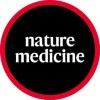Clinical trials
CanSino Biologics reported results of their open-label phase I COVID-19 vaccine trial in Wuhan, China. Their recombinant adenovirus expressing SARS-CoV-2 spike protein, adenovirus type-5 (Ad5) vectored COVID-19, was tested in three doses on 108 healthy volunteers. The study, published in Lancet, found that most volunteers developed both neutralizing antibody and T cell responses to SARS-CoV-2. Although 81% of volunteers showed at least one transient adverse reaction, including pain, fever, fatigue and headaches, no serious adverse reactions were reported. The authors identify pre-existing immunity to Ad5 as a factor that may reduce the vaccine’s efficacy.
The remdesivir trial previewed by NIAID Director Anthony Fauci at the end of April has been published in the New England Journal of Medicine. The double-blind, randomized, placebo-controlled trial involved 1,063 patients suffering from COVID-19 with evidence of lower respiratory tract involvement and shows a 4-day difference in recovery time for the remdesivir arm (11 days versus 15 days for the control group). No significant difference in overall survival was found.
Clinical studies
Mandeep Mehra of Harvard Medical School and collaborators conducted a retrospective study of over 96,000 records of patients with COVID-19 to analyse outcomes of hydroxychloroquine and chloroquine treatment. The study, published in Lancet, found that neither drug, alone or in combination with macrolide antibiotics (azithromycin and clarithromycin), showed any evidence of benefits to patients with COVID-19, and instead were associated with increased risk of death. Mortality was 9.3% in the control group, 18% in the hydroxychloroquine group, 23.8% in the hydroxychloroquine plus macrolide group, 16.4% in the chloroquine group and 22.2% in the chloroquine plus macrolide group. All four treatment groups had an increased risk of developing de novo ventricular arrhythmia. Following the publication of the Lancet study, the French government revoked the decree authorizing the use of hydroxychloroquine to treat COVID-19. The WHO also announced a “temporary pause” of the hydroxychloroquine arm of its SOLIDARITY trials.
Preclinical studies
Work published in Cell studied SARS-CoV-2 cell-type tropism and its relationship to COVID-19 pathogenesis. In vitro infection of primary human respiratory tract cells with GFP-expressing SARS-CoV-2 found a correlation between viral infection and a cell’s angiotensin-converting enzyme II (ACE2) expression level. Single-cell in situ hybridization identified 20% of human primary upper-respiratory epithelial cells expressed ACE2. ACE2-expressing cells were most common among ciliated cells from the nose, with lower numbers of expressing cells in the distal bronchiolar and alveolar regions. Although the study finds detectable ACE2 and TMPRSS2 expression in MUC5B+ Club cells, these cells were not infected by SARS-CoV-2. Autopsy data in the study shows SARS-CoV-2 infection in the trachea; as a result, the authors propose that lower airway infection occurs mainly through oral–lung aspiration.
Epidemiology and public health
A study monitored SARS-CoV-2 viral RNA titers in New Haven’s sewage system from 19 March to 1 May. The authors find that their primary sewage sludge assay’s peak of SARS-CoV-2 detection preceded the peak of COVID-19 hospital admissions by three days and the peak of COVID-19 cases by a full week. The authors, who posted the study as a non-peer-reviewed preprint, propose that monitoring viral shedding in sewage can detect the early phases of SARS-CoV-2 spread in a community.


 News feature: Low- and middle-income countries face up to COVID-19
News feature: Low- and middle-income countries face up to COVID-19
 More News and content from Nature Medicine
More News and content from Nature Medicine